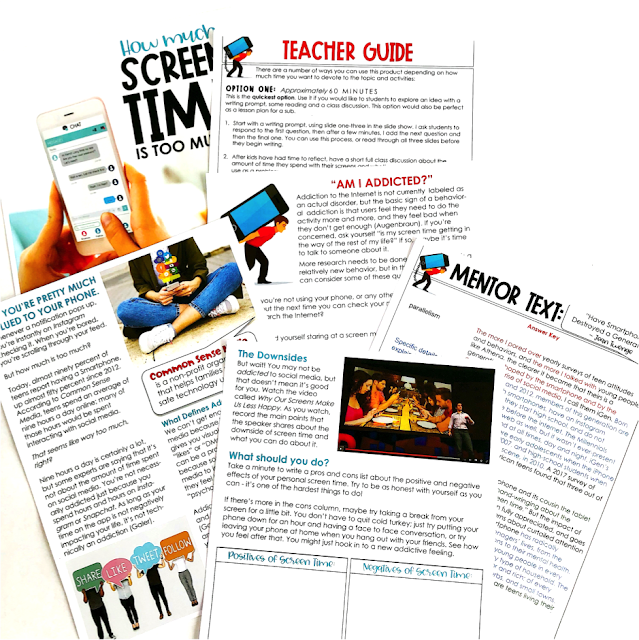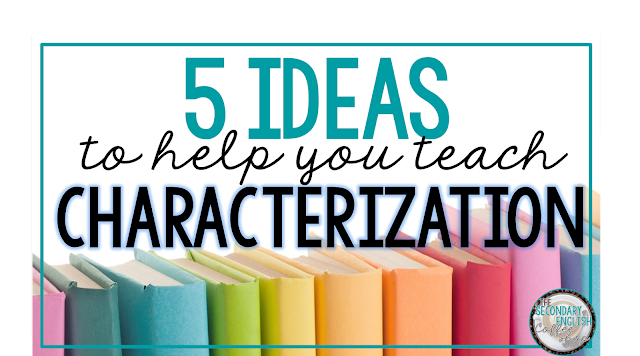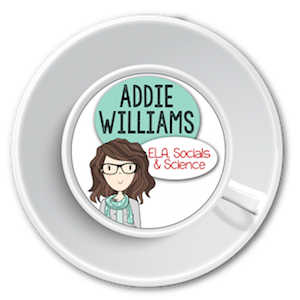How Do I Use Informational Texts with Reading Workshop?
Reading workshop is a wonderful way to turn our kids into lifelong readers. They get to choose texts they want to read, and we are still able to teach them the skills of close reading and analysis.
But where do informational texts fit into a reading workshop? If your curriculum requires that you teach non-fiction, how do squeeze it in?
It's actually quite easy to do. And, in this post I'm going to show you how I make it work in my classroom. I'll also provide you with some strategies and freebies that you can use to try it with your students, so read on!
Informational Mentor Texts:
I love using non-fiction as mentor texts in reading workshop because they:
1. Help me build engagement
2. Allow for class discussions
3. Let me teach skills with a "full class" text
Non-fiction pieces are excellent choices for mentor texts and mini-lessons because they are often short enough to be read by everyone during class, and can be used to teach the features of non-fiction AND fiction. There are many elements of good writing that overlap both genres because writers play with words and develop ideas in all forms of writing. Yes, they may do it a little differently in non-fiction, but the skills are essentially the same, and so these shorter pieces are perfect for lessons on author craft.
Let me illustrate with some examples:
1. Help me build engagement
2. Allow for class discussions
3. Let me teach skills with a "full class" text
Non-fiction pieces are excellent choices for mentor texts and mini-lessons because they are often short enough to be read by everyone during class, and can be used to teach the features of non-fiction AND fiction. There are many elements of good writing that overlap both genres because writers play with words and develop ideas in all forms of writing. Yes, they may do it a little differently in non-fiction, but the skills are essentially the same, and so these shorter pieces are perfect for lessons on author craft.
Let me illustrate with some examples:
Early in my workshop, I want my students to understand how authors use their words for effect. We learn about tired words and vivid verbs and how changing one word can totally change the meaning of a sentence. We look at imagery and figurative language and discuss how these devices are used purposefully by the writers.
Because my kids are all reading something different, I need to use mentor texts to model these things. Sometimes I use passages from YA novels, but often I'll find a short non-fiction text that will allow us to discuss an engaging topic together while we learn about author choices. This serves a triple whammy because the kids are practicing their speaking and listening skills too.
One of my favorite texts for teaching metaphor is In Praise of the Humble Comma by Pico Iyer. I dig it out when we are working on word choice - and when I want to start some lessons on comma usage. Sometimes, I'll use the whole text, as it's full of metaphors and other literary devices, or I'll give my students passages from several non-fiction texts that illustrate the use of metaphor. That way they can see that it's a device that is commonly used in this genre.
After our discussion, I'll show them a passage in novel I'm reading that contains metaphor too, and I'll talk about how it's an effective technique in all genres. Then, I give them time to read their own novels and, as they do, they will watch for any uses of metaphor in their book.
If you'd like to try this with your students, grab the slideshow here, and the handout here.
If you'd like to try this with your students, grab the slideshow here, and the handout here.
This process works especially well if you find something current that will be high interest for most of your students. For example, I could begin the class with short discussion about introverts and extroverts, and then give my students this short article on the topic. In it, the writer uses an extended metaphor to make her point about introversion. Students would be told to read it and explain how the extended metaphor helps the writer develop her message.
For example, I always talk with them about their relationship with social media, and use some mentor texts to teach skills when I do. In the article pictured here, they use this mentor text to learn how to fully develop an idea with multiple, clear examples.
Tip: when you use these texts during reading workshop, don't teach all the things.The purpose is to use the text as a vehicle to teach a skill/concept, so don't overwhelm the kids with everything else that could be taught. It's a mini-lesson, so you want to keep it short and sweet. With the article on introversion, for example, I focus on the use of metaphor only.
Full units on exposition or opinion:
Full units on exposition or opinion:
You can also do a focused unit on informational texts during your reading workshop. For example, after I finish my six - eight week unit on description and narration, we switch over to expository and opinion writing. Students will still get their ten minutes of reading each day and will continue to track the pages they read during the week; all of the expectations around reading goals continue as well.
The mini-lessons and activities will focus entirely on non-fiction, however. We will start by examining how the conventions of the genre are different from those of fiction. I choose some high interest topics that we can discuss, and use lots of mentor texts to illustrate what expository and opinion writing looks like. I also provide mentor texts that have room for improvement, so kids can do some critical thinking about effective writing and to practice revision process.
Longer Non-Fiction Texts:
There are also many wonderful non-fiction texts that kids can choose to read during reading workshop, instead of a work of fiction. My current favorite is 57 Bus, a true story about two teens who crossed paths on a bus one day, setting in motion a tragic and moving tale. It's perfect for teaching kids about point of view and multiple perspectives.
I asked some teachers who do workshop for recommendations for engaging non-fiction texts and I created a list of suggestions with links that you can grab here.
I asked some teachers who do workshop for recommendations for engaging non-fiction texts and I created a list of suggestions with links that you can grab here.
If you'd like some help using informational texts in your reading workshop - or your classroom in general - you can check out the links here:
My colleagues in the Coffee Shop have some excellent lessons for informational text too:
Tracee Orman: Cause & Effect Non-Fiction Activity
Danielle Hall: Nonfiction Bundle of Engaging Readings
Stacey Lloyd: Analyzing Informational Texts
Tracee Orman: Cause & Effect Non-Fiction Activity
Danielle Hall: Nonfiction Bundle of Engaging Readings
Stacey Lloyd: Analyzing Informational Texts
















































